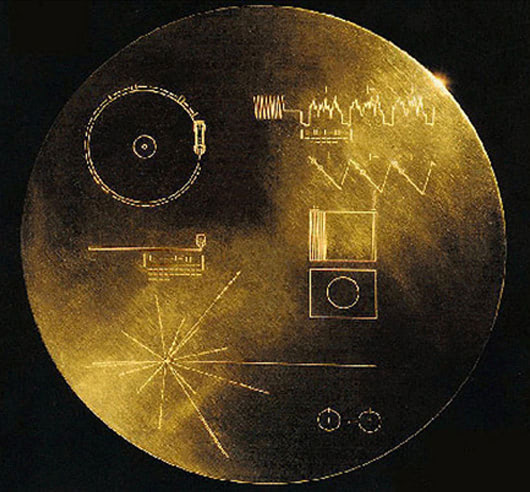
In 1977 lanceerde NASA Voyager 1 en Voyager 2, twee onbemande interplanetaire ruimtesondes die werden uitgezonden om de ruimte buiten ons zonnestelsel te verkennen. Aan boord van elk bevond zich een grammofoonplaat die bedoeld was om het verhaal van de aarde te communiceren aan potentiële buitenaardse wezens.
Om de 'diversiteit van het leven op aarde' weer te geven, bevatten de platen 115 afbeeldingen en een verscheidenheid aan natuurlijke geluiden, zoals die van branding, wind, donder, vogels, walvissen en andere dieren. Daarnaast voegden ze gesproken begroetingen van aardbewoners in vijfenvijftig talen toe, een eclectische selectie van 90 minuten muziek, waaronder zowel oosterse als westerse klassiekers en een verscheidenheid aan 'etnische muziek', evenals boodschappen van president Jimmy Carter en VN-secretaris-generaal Waldheim.
Hoewel we alleen maar kunnen hopen dat eventuele buitenaardse wezens bekend zijn met het concept van een platenspeler, vraagt men zich misschien af of de eenvoud van deze actie de egocentrisme van de 'menselijke natuur' of 'westerse cultuur' weerspiegelt. Wat zegt het dat wij 'de ruimte' omzetten in 'lokale ruimte' door de universaliteit van onze technologie niet alleen als relevant en overdraagbaar buiten onze cultuur, maar ook buiten onze planeet te beschouwen? In deze tijd zijn onze technische kennis en vaardigheden ver voorbij de LP gegaan, maar is ons vermogen om onze eigen technologische ontwikkelingen te contextualiseren en in perspectief te plaatsen meegegroeid?
Bron: www.geo.de, voyager.jpl.nasa.gov



Comments (0)
Share your thoughts and join the technology debate!
No comments yet
Be the first to share your thoughts!